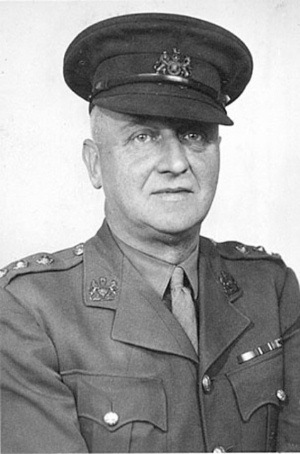Sergeant
Arthur Simpson
13844 4th Grenadier Guards
Lived at 31 Lee Street
I am trying to find out information
about my grandfather Arthur Simpson life as a solder in the first world
war. He was born 8 Belford St. Burnley 16th June 1895 and his father was
called Richard and Richard's wife was called Margaret nee Cherry. Arthur
was in the Coldstream Guards during WW1 and according to the newspaper
article I read when he died he rose to the rank of sergeant and served
in France. It also said he was mentioned in dispatches on three occasions
or was he just romancing to my father I don't know. My grandfather Arthur
went on to become a regimental sergeant major in the home guard in Burnley.
I know he went to Hanover after the war and was with the Allied Control
Commission (textile section) as Principal Control Officer for the Hanover
Region. He lived at "Ivy Dene" 32, Melville St. Burnley at this
time. After the second world war he married again to a German lady after
my grandmother had died. He died in 18th December 1951 and lived at 4
Westfield Nelson Lancashire and was secretary to Nelson Cotton Spinners
and Manufacturing Association.
I was only one year old when he died so I only know what my dad had told
me about him.
I am sending you two photo's one of my granddad Arthur
Simpson and another photo of his uncle Harry
Cherry
(Courtesy of his Grandaughter Jacqueline King)
Further research below by
Alan Graveson
Arthur Simpson was the
only child of Richard and Margaret Simpson who, in 1911, ran a furniture
business at 31/33 Lee Street, Burnley. In 1911, Arthur was a 16 year old
warehouseman at a cotton mill. In 1914, when he was a 19 year old clerk,
of 31 Lee Street, Burnley, he was one of the early volunteers to enlist
in the army, joining up at Burnley on 20th November 1914. He was sent
to Windsor to train with the Coldstream Guards in the Coldstreams' reserve
battalion. The reserve battalion had been established to train reinforcements
for the three Coldstream Guards battalions serving overseas and the more
experienced men of the reserve battalion maintained the Guards' traditional
duties of guarding the Royal family.
In July 1915, a Guards' Division was established in France, bringing together
the many Guards' Battalions and creating the Welsh Guards. The division
required a Pioneer Battalion to carry out construction and entrenching
work throughout its divisional area, as well as to fight when needed.
The 4th Battalion Coldstream Guards was formed to undertake this task
as was created at Windsor on 17th July 1915 as the Guards Pioneer Battalion
made up of men posted from the reserve battalion. It later became known
simply as the 4th Battalion Coldstream Guards. Arthur had been appointed
to the 4th Battalion Coldstream Guards on the day it was created and was
granted the appointment of Lance Corporal on July 17th 1915.
A month later, on 15th August 1915, the 4th Battalion sailed from Southampton
to Le Havre to join the Guards Division in France and Flanders. The major
engagements of the Guards Division in the First World War are shown on
Chris Baker's website at:
http://www.1914-1918.net/gdiv.htm
Not long after arriving
in France, they fought at the Battle of Loos in September 1915. On January
4th 1916, Arthur was promoted to unpaid Lance Serjeant and on 30th January
1916 he was promoted to paid Lance Serjeant. He was later promoted to
Serjeant [the traditional way of spelling serjeant was with a j].
On 14th August 1917 he was appointed as a temporary instructor at the
Guards' Division Central Training School at Le Havre. He spent six weeks
there as an instructor putting the new drafts through their paces and
preparing them for life at the front. Officers were also trained in their
specialist needs or the latest infantry tactics. Such appointments were
often made to allow an NCO a period of rest from the front-line as a form
of respite or 'thank-you'. The job could be enjoyable and civilised if
you needed the rest, or a frustration if you missed being with your comrades
and men in the field and had the feeling you had somehow "deserted"
them for a while. On 28th September 1917 Arthur passed to the Guards'
Division Base Depot at Harfleur and probably returned to his battalion
immediately.
Arthur Simpson was certainly Mentioned in Despatches on two occasions
that are listed in his record. There may have been a third as it is never
possible to tell if every page of a record has survived. The Despatches
were recorded as being published in "The London Gazette" on
7th November 1917 and 18th December 1918. You can search the Gazette online
but it can be difficult to match dates precisely as publication dates
were not always the same for supplements that included military awards.
For example, Douglas Haig's Despatch of 7 November 1917, mentioned Arthur,
but the list was not published until 14th December with a note that other
lists would be added on 18th December and other dates. Mentions in Despatches
were for "distinguished service in the field" and entitled the
wearing of one bronze oak-leaf emblem on the ribband of the Victory Medal,
no matter how many times mentioned.
Arthur was granted leave to the UK on 13th November
1918 (two days after the Armistice) while near Maubeuge in France and
returned to the Battalion on 27th November 1918. On 4th December 1918
he returned to the UK and was based back at Windsor with the reserve battalion
where he remained until he was discharged on 6th June 1919. He qualified
for the 1914-15 Star, the British War Medal and the Victory Medal. You
can read about the Guards Division online at:
http://www.scribd.com/doc/47784866/Elite-The-Guards-Divisions-1914-45
(Courtesy of Jacqueline
King)
